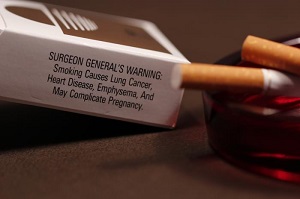Setting up effective, comprehensive tobacco control policies is a constant battle between healthcare workers, legislators and tobacco control advocates and tobacco companies, who fight every measure tooth and nail.
 According to the Surgeon General’s 2014 report “the Health Consequences of Smoking,” smoking has killed ten times as many Americans as all of the nation’s wars combined. This report was released on the 50th anniversary of the landmark 1964 report, which presented a multitude of data and established definitive links between smoking and a variety of cancers. The reports present irrefutable evidence that smoking is a significant health risk, and forms the justification for the tobacco control policies the government has instituted since the dangers first became apparent.
According to the Surgeon General’s 2014 report “the Health Consequences of Smoking,” smoking has killed ten times as many Americans as all of the nation’s wars combined. This report was released on the 50th anniversary of the landmark 1964 report, which presented a multitude of data and established definitive links between smoking and a variety of cancers. The reports present irrefutable evidence that smoking is a significant health risk, and forms the justification for the tobacco control policies the government has instituted since the dangers first became apparent.
The tobacco industry doesn’t like these reports, to say the least. But through all of their efforts to cast doubt on the evidence, all of the attempts to muddy the waters with bad science, and all of the attempts to fight legislative challenges to their hold on society, the government has time and time again taken steps to reduce the burden of disease and death caused by smoking.
Tobacco Control Policies to Reduce Smoking Among Adults
When the original Surgeon General’s report was released, tobacco still had a firm stranglehold on society. However, after the release of the 1964 report, things started to change. Tobacco control policies started to become the norm. In 1965, the Federal Cigarette Labeling and Advertising Act was passed, which required that all cigarette packs contained the warning “Caution: Cigarette Smoking May Be Hazardous to Your Health.” This warning was made firmer in 1969, with all cigarette packs having to display “Warning: The Surgeon General Has Determined that Cigarette Smoking Is Dangerous to Your Health.”
With the key message from the Surgeon General’s report now emblazoned on packs of cigarettes, the tide really started to turn against the tobacco industry. In 1971, cigarette advertising on radio and television was prohibited. In the decades that followed, cigarettes were discontinued from rations given to sailors and soldiers, “no smoking” sections begun to appear on commercial airplanes and elsewhere, environmental tobacco smoke (second-hand smoke) was classed as a known human carcinogen, and tobacco companies were banned from using misleading terms like “light” which would suggest a lower health risk from certain cigarettes.
These societal changes, along with other measures such as increases in tobacco tax and various smoke-free air policies instituted by states, have put pressure on the tobacco industry and helped to bring down the smoking rate.
Measures to Reduce Youth Smoking
90% of smokers first try smoking before the age of 18. This is why reducing youth smoking is essential to creating a smoke-free society. It’s also why governmental measures to reduce youth smoking are vital.
Age restrictions on purchasing cigarettes and tobacco products is one of the simplest approaches to reducing youth smoking, with most states having set a minimum age to purchase tobacco at 18. California, Hawaii and at least 170 localities have raised the minimum purchase age to 21 in order to further curb youth tobacco use.
Numerous other measures have been implemented to reduce youth smoking, including bans on characterizing flavors in tobacco products, increases in the price of cigarettes (which affect youths more than adults), educational programs and more. In addition, more general tobacco control policies – such as smoke-free air legislation – also impact youth smokers.
The Tobacco Industry vs. Tobacco Control Policies
When a new measure to reduce smoking in society is introduced, tobacco companies are quick to mount counter-offensives. Particularly in the past, the tobacco industry was notorious for using shaky or outright misleading scientific studies to cast doubt on the emerging consensus regarding the dangers of tobacco. For example, tobacco companies claimed that meaningful conclusions about health risks to humans can be determined from research on animals, despite the fact that this isn’t the case.
As well as using bad science and stirring up doubt about reliable scientific evidence, the tobacco industry challenges moves to increase taxes on cigarettes, to create smoke-free areas, to restrict the design or language used on cigarette packets and more. Tobacco companies hire public relations teams to attempt to sway public opinion, and even engage in superficially positive activities such as measures to reduce youth uptake of smoking in order to change their public image and even to delay the implementation of effective tobacco control policies.
The U.S. government and others around the world need to remain vigilant to ensure that such tactics used by the tobacco industry don’t delay the implementation of new policies or erode the positive work which has already been done.
Thankfully, the tide has long turned against the tobacco industry. The U.S. federal government, and particularly states such California, have instituted stringent policies to reduce youth uptake of smoking and discourage adult smoking, and are continuing in their goal of educating the public about the very real and severe risks of smoking.
References
- Pierce, J. P., White, V. M. And Emery, S. L. (2012) What public health strategies are needed to reduce smoking initiation?





